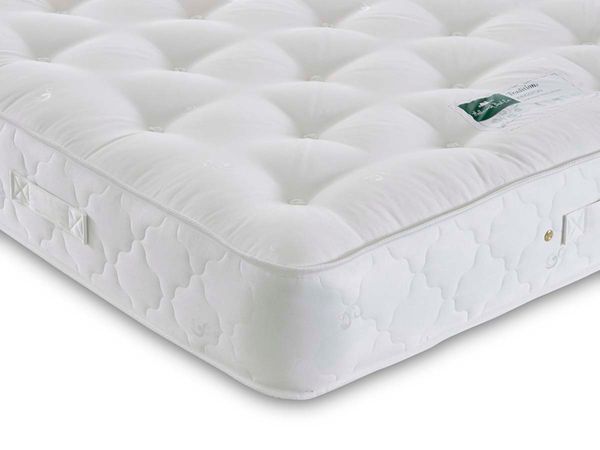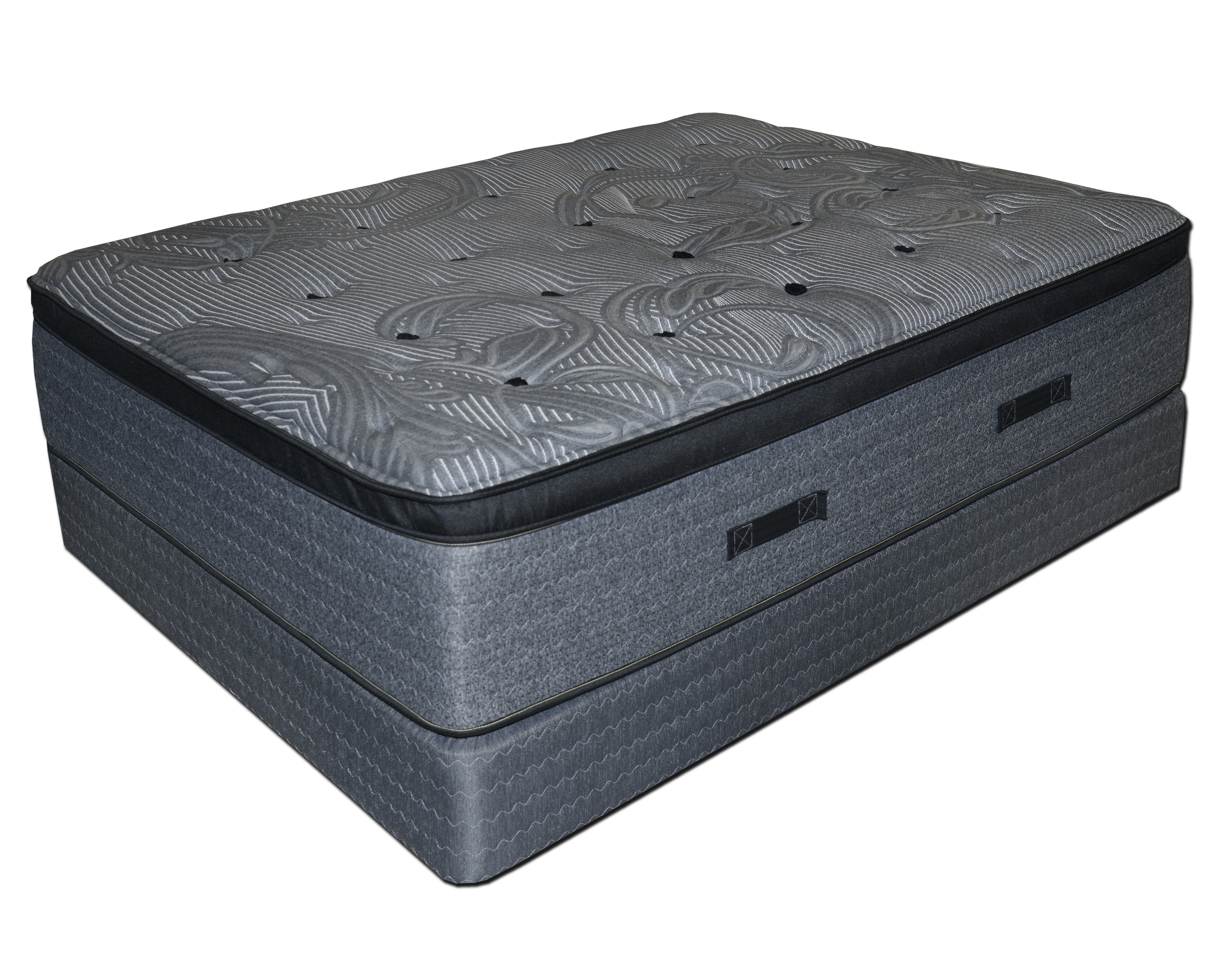Victorian House Design
The Victorian House Design is an architectural style that originally characterized by its Gothic Revival elements and romantic, ornamental detailing. Exhibited on homes throughout the country, the Victorian house style has elements like turrets, porches, and towers, alongside ornate details like spindles, brackets, and finials. This creates a very iconic, recognizable home, and it still stands out in today's more contemporary architectural landscape. While this style has a strong presence in Europe and the Americas, it is especially popular in the UK due to its strong influence on the Victorian era.
The Victorian home style was a reaction to the industrial revolution that was occurring during the 1850s to 1900. It was a representation of how the wealthy and powerful sought to demonstrate their status as a member of an elite class. This is why so many of these older style homes come with a wide range of decorative details and design elements. It's why many interior features such as decorative moldings, intricate carpentry, and fabrics with abstract designs are found in Victorian homes.
At the same time, this Victorian house design is still an incredibly popular choice for homeowners today. For one, it has an aesthetic appeal that modern architectures lack. The detailed millwork, the turrets, and the wrap-around porches give the house an almost majestic look. One of the main advantages of this style is also the fact that many of the original features can be retained even during a modern renovation, allowing homeowners to enjoy a mix of the traditional and the modern.
Gambrel Roof House Design
The Gambrel Roof House Design is a popular roof structure for homes with a two-story architecture. Commonly seen on barns and farm buildings, the Gambrel Roof is identified by its symmetrical, two-sided roof, with the upper portion typically in an inverted "V" shape that extends farther than the lower portion. This allows more storage space in the form of upper-level attics.
The Gambrel Roof was popularized in the 17th century and was traditionally made from wood. Today, the roof structure is still available in wood, although other materials such as metal, shingles, and asphalt are becoming more common. The Gambrel Roof is a good choice for those looking to add a classic, elegant look to their home without breaking the bank. It has an interesting, timeless aesthetic and is less expensive than a sloped roof, making it an economical choice for many homeowners.
The Gambrel Roof is ideal for those looking to create a traditional architectural style, although it can be used in contemporary designs as well. One of the main advantages of the Gambrel Roof is that it adds great natural light into the space, making it great for those looking to make a small space look larger. Additionally, the Gambrel Roof is a good choice for those in coastal areas since its inverted "V" shape helps to direct rainwater away from the home.
Mediterranean House Design
The Mediterranean House Design is a popular architectural style that includes many regional variations. Seen in areas such as Italy, Spain, and Southern France, this design features exterior walls made from stucco, wood, or stone with bright colours on window and door frames. The style is known for its curved, tiled roof and low windows, which help to keep the home cool in hot climates.
Inside, Mediterranean homes boast open floor plans that take up two or more stories. This creates an airy atmosphere, with accents like terracotta tiles and patterned rugs lending a warmth reminiscent of the region's Mediterranean climate. A signature feature of this type of house is the courtyard, usually centred around trees or plants, which provides natural cooling and ventilation in the hotter months.
The Mediterranean house style is ideal for those looking to bring a sense of the outdoors inside. Its design features embrace natural elements such as water features, gardens, and terraces to create a connection with nature. Additionally, the bright colours and open floor plan of the style create a light-filled and airy atmosphere in the home.
American Foursquare House Design
The American Foursquare House Design is a timeless architectural style that was popularized in the early twentieth century. The shape of this home is a box-like, two-story, roughly foursquare-shaped structure that has a square hipped or pyramidal roof. What sets this style apart is the symmetrical facade of single and double hung windows with projecting porches.
Inside, the American Foursquare is largely uncluttered and plain with features such as hardwood floors, simple moldings, and multiple fireplaces. Upstairs, the attic space is often used as a bedroom, but can be used for storage. The style also includes other elements such as built-in bookshelves and benches, along with high ceilings and tall windows that provide lots of natural light.
Today, the American Foursquare House Design still holds its character and appeal. It's popular for its simple, iconic design, which is particularly suited to tight-knit neighbourhoods or family living. Additionally, the style embraces modern-day equivalents of the original features–like glass-paneled doors, wide porches, and sun rooms–allowing homeowners to easily add a personal touch to their home.
Colonial Revival House Design
The Colonial Revival House Design is an architectural style that draws inspiration from the traditional homes of the British colonists in the 1800s. Prominent features of the revival style include wood shingles, clapboard siding, and narrow windows, as well as a low-pitched roof with an extended eaves. The door is often centered in the front of the home with two windows on either side, and a crossover asymmetrical pattern is often used.
Inside, Colonial Revival homes feature an airy layout with traditional finishes such as wood flooring, exposed wooden beams, and a central stairwell. Features such as inglenooks—stone or brick fireplaces with bench or couch seating—are also common. A Colonial Revival home usually follows a symmetrical design, with elements such as the door and entryway situated in the middle, and adjacent rooms on either side.
The Colonial Revival House Design is still a popular architectural choice for homeowners today. Its traditional style provides a timeless beauty and a sense of charm, while its flexibility allows for modern updates like updated cabinetry and finishing. In addition, this style is also beloved for its ability to bring a sense of history and character to its surroundings, creating a warm and comforting atmosphere in the home.
Arts and Crafts House Design
The Arts and Crafts House Design is an architectural style popularly found in the UK during the late 19th and early 20th centuries. The style was a reaction to the highly ornate, mass-produced designs of the Victorians and sought to emphasize craftsmanship, quality materials, and simplicity. It is a subtle, low-rise style that’s often referred to as a “cottage” or “bungalow” style because of its modest size.
The Arts and Crafts style is defined by its natural materials and organic finishes, which embrace warm tones and muted colours. Elements like exposed posts, beams, rafters, and timber trusses are also featured prominently, along with leaded and coloured-glass windows. Inside, Arts and Crafts homes feature open floor plans and the use of natural-coloured materials.
The Arts and Crafts House Design is still popular with homebuyers today. Its simple, uncluttered design offers a peaceful, calming atmosphere, while its low-pitched roof and wide range of window options make it well-suited for sunny climates. Additionally, the style’s use of natural materials and low-maintenance finishes make it a great choice for those looking for a home with timeless appeal.
Tudor Revival House Designs
The Tudor Revival House Design was popular in the 1930s and is still seen in today’s architecture. Based on the architecture of 16th century England, the Tudor style is identified by its unique, ornamental details like its steeply pitched gabled roofs, decorative half-timbering, and detailed brickwork. It also features multiple windows, high galleries, and tall chimneys.
Inside, Tudor Revival homes feature a cozy atmosphere with small windows that give it an intimate, antiquated look. A common feature found inside is the inglenook, which is a decorative stone or brick fireplace centered in the room. Additionally, with lurie details like wood-beamed ceilings and ornately decorated walls, a Tudor Revival home often leans toward the rustic, medieval style of architecture.
The Tudor Revival House Design is still an incredibly popular architectural style that’s ideal for those seeking a timeless yet luxurious-looking home. Its distinctive features, like its steeply pitched roof and decorative half-timbering, give it a sense of grandeur and history, while its use of ornate details adds a touch of elegance to its exterior.
Queen Anne Style House Design
The Queen Anne Style House Design is a style of architecture popularized in the late 19th century. Defined by its asymmetrical form, porches, towers, and ornamentation, this style was inspired by Queen Anne’s Winter Palace in London. Inside, homes feature large, open floor plans with high ceilings and a blend of classic and modern finishes.
Exteriors of Queen Anne Style homes are usually made from wood or brick, with features like towers, turrets, and projecting bay windows. The style also uses multiple materials and textures, such as wood, Vermont slate, and copper accents, to create a unique, eye-catching design. Additionally, it’s characterized by its asymmetry, with downstairs rooms being slightly different from the upstairs.
The Queen Anne Style House Design continues to be popular with homebuyers today. Its unique features and distinctive facade make it stand out from other home styles, while its large, open floorplan and blend of traditional and modern finishes provide a great balance between the classic and the contemporary. Additionally, its use of multiple materials and textures create an interesting, eye-catching look that’s sure to attract attention.
Prairie Style House Design
The Prairie Style House Design is a style developed by the renowned architect Frank Lloyd Wright in the early 1900s. This style is characterized by its low, horizontal lines with wide overhangs, deep roof pitches, and natural materials. It also utilizes strong geometric shapes, large windows, and open floor plans.
Inside, Prairie Style homes feature a modern layout with lots of natural light and open spaces. A signature feature is the open plan, which works to break the traditional barriers between rooms. The organic, fluid nature of these plans coupled with the use of natural, earth tones creates a warm, inviting atmosphere. This style also prides itself on its use of natural materials, opting for wood and stone instead of steel, concrete, or plaster.
The Prairie Style House Design is a great choice for those looking for a home with a timeless appeal. Its low, horizontal lines and natural materials offer a sense of peacefulness, while its open floor plans and large windows provide plenty of natural light and spaciousness. Additionally, its signature feature, large windows, adds an airy, open feel to its interiors.
Art Deco House Designs
The Art Deco House Design was born in Paris in the 1920s and is characterized by its emphasis on architecture, art, and technology. It is often seen as the first truly modern style of architecture, and its use of colour, metallic finishes, symmetrical geometries, and ornamental detailing all create a very bold look.
Exterior features of an Art Deco House often include bold colours, sleek shapes, and rows of windows. Materials such as travertine, terrazzo, and stainless steel are frequently found, which helps to brighten up the home. The style also frequently uses chevron or zigzag motifs to emphasize its art Deco roots.
This style is still remarkably popular, with many homeowners opting for Art Deco design features in their homes. Its use of bold colour and detailed finishes offers a distinct yet classic look, while its geometrical design brings a modern, contemporary feel. Additionally, its classic Art Deco motifs – such as chevrons, zigzags, and sunbursts – help to create a unique, eye-catching style of architecture.
Fast-Changing House Design in the 1900s
 House design in the 1900s underwent rapid changes as innovations in architecture, technology and materials were embraced by the public.
Victorian, Craftsman, and Colonial Revival
styles were popular early in the century; while the
Art Deco and Mid-Century Modern
looks dominated the latter half of the century. Throughout the 1900s, developers experimented with building materials, sizes and exterior ornamentation and styles to reflect the evolving tastes of the time.
House design in the 1900s underwent rapid changes as innovations in architecture, technology and materials were embraced by the public.
Victorian, Craftsman, and Colonial Revival
styles were popular early in the century; while the
Art Deco and Mid-Century Modern
looks dominated the latter half of the century. Throughout the 1900s, developers experimented with building materials, sizes and exterior ornamentation and styles to reflect the evolving tastes of the time.
Impact of the Industrial Revolution
 The Industrial Revolution of the late 1800s influenced house design in the 1900s as
iron, steel and factory-made products
became widely available. Simple two-story Victorian homes with minor ornamentation were constructed with random-laid brick walls and wooden trim. On larger properties, developers began to implement the hallmark multi-tiered look that is recognized today as the "colonial" style.
The Industrial Revolution of the late 1800s influenced house design in the 1900s as
iron, steel and factory-made products
became widely available. Simple two-story Victorian homes with minor ornamentation were constructed with random-laid brick walls and wooden trim. On larger properties, developers began to implement the hallmark multi-tiered look that is recognized today as the "colonial" style.
Rise of the Craftsman
 The
Craftsman
look rose in popularity in the early 1900s thanks to the Stick-style architecture of the East Coast and the Sears Catalog company, which offered "kit" homes that could be easily constructed by the average homeowner. These homes typically had large porch wraps and low-pitched rooflines and were often constructed with wooden siding. Many shapely Craftsman homes in the Pacific Northwest were constructed of wood harvested in the region.
The
Craftsman
look rose in popularity in the early 1900s thanks to the Stick-style architecture of the East Coast and the Sears Catalog company, which offered "kit" homes that could be easily constructed by the average homeowner. These homes typically had large porch wraps and low-pitched rooflines and were often constructed with wooden siding. Many shapely Craftsman homes in the Pacific Northwest were constructed of wood harvested in the region.
Art Deco and Mid-Century Modern
 In the 1920s, many architects embraced the
ornate Art Deco
style, with its simplistic monochrome palette and smooth walls and facades. Mid-century Modern look, in contrast, embraced open floor plans, floor-to-ceiling windows and plenty of natural light. Natural rock and stone materials were used to create an organic feel in living spaces. Many of the beautiful homes built in this era still grace residential developments today.
In the 1920s, many architects embraced the
ornate Art Deco
style, with its simplistic monochrome palette and smooth walls and facades. Mid-century Modern look, in contrast, embraced open floor plans, floor-to-ceiling windows and plenty of natural light. Natural rock and stone materials were used to create an organic feel in living spaces. Many of the beautiful homes built in this era still grace residential developments today.
Fast-Changing House Design in the 1900s

House design in the 1900s underwent rapid changes as innovations in architecture, technology and materials were embraced by the public. Victorian, Craftsman, and Colonial Revival styles were popular early in the century; while the Art Deco and Mid-Century Modern looks dominated the latter half of the century. Throughout the 1900s, developers experimented with building materials, sizes and exterior ornamentation and styles to reflect the evolving tastes of the time.
Impact of the Industrial Revolution

The Industrial Revolution of the late 1800s influenced house design in the 1900s as iron, steel and factory-made products became widely available. Simple two-story Victorian homes with minor ornamentation were constructed with random-laid brick walls and wooden trim. On larger properties, developers began to implement the hallmark multi-tiered look that is recognized today as the "colonial" style.
Rise of the Craftsman

The Craftsman look rose in popularity in the early 1900s thanks to the Stick-style architecture of the East Coast and the Sears Catalog company, which offered "kit" homes that could be easily constructed by the average homeowner. These homes typically had large porch wraps and low-pitched rooflines and were often constructed with wooden siding. Many shapely Craftsman homes in the Pacific Northwest were constructed of wood harvested in the region.
Art Deco and Mid-Century Modern

In the 1920s, many architects embraced the ornate Art Deco style, with its simplistic monochrome palette and smooth walls and facades. Mid-century Modern look, in contrast, embraced open floor plans, floor-to-ceiling windows and plenty of natural light. Natural rock and stone materials were used to create an organic feel in living spaces. Many of the beautiful homes built in this era still grace residential developments today.































































































